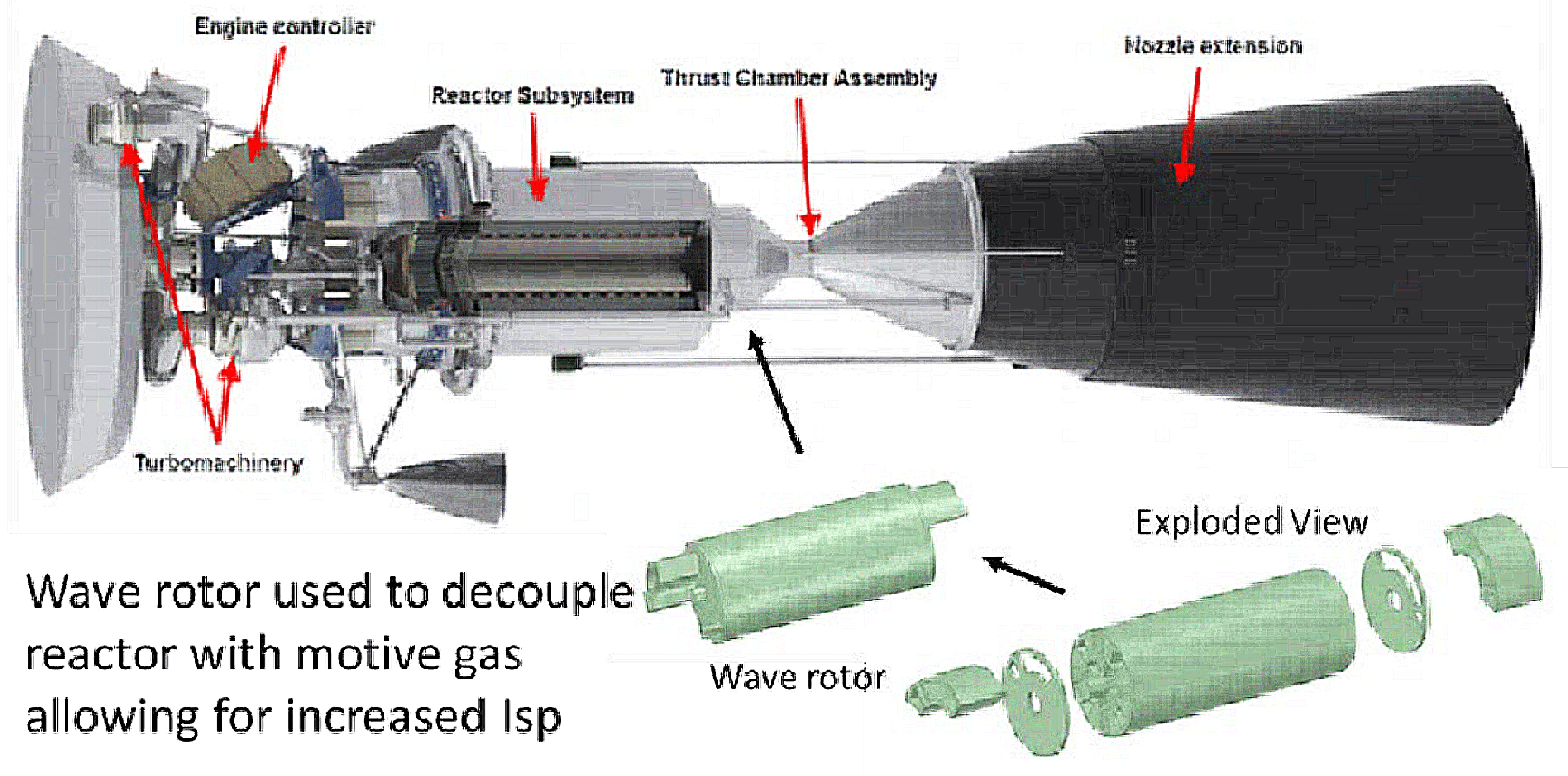NASA’s Innovative Advanced Concepts (NIAC) program provides exploratory funds to technological concepts that would be immensely significant if they worked, but have a long journey just to their viability. Among this year’s contenders, probably the idea with the biggest blue-sky potential is a way to get astronauts to Mars in 45 days. For comparison, it took Perseverance 203 days (almost seven months).
Professor Ryan Gosse of the University of Florida calls his idea “Bimodal NTP/NEP with a Wave Rotor Topping Cycle” in a brief description in a NASA blog. Here NTP/NEP means Nuclear Thermal Propulsion/Nuclear-Electric Propulsion, two ideas for spaceflight that have been around for a while but could mean drastically reducing the time it would take humans to get to Mars for any future missions.
Details are thin, but that is not unusual for Phase I grants like the one Gosse has received. At just $12,500 the money will be nowhere near enough to allow him to build a prototype, let alone a working spaceship. Instead, it will give Gosse a chance to develop the concept to a point where it can compete for future phases or other sources of funding.
Although many spacecraft’s instruments have been powered by radioactive decay, they have relied on conventional chemical propulsion to give them the impetus to voyage to their targets. In theory, there are big advantages to using nuclear power instead, particularly in reduced fuel loads. Nuclear-Thermal Propulsion would heat a propellant such as liquid hydrogen until it becomes a plasma, which escapes through a nozzle, relying on Newton’s third law to send the craft in the other direction.
Nuclear-Electric Propulsion, on the other hand, would use the energy produced by the reactor to power an ion thruster.
Bimodal NTP/NEP with a Wave Rotor Topping Cycle schematic. The inventor has received funds from NASA to prove it can take us to Mars in 45 days. Image Credit: Ryan Gosse
Rather than seeing these technologies as competitors for each other Gosse believes they can be combined using a “Wave rotor to decouple [the] reactor with motive gas,” to produce 1,800-4,000 seconds of specific impulse (lsp), while avoiding the limits on mass to power ratios NEPs currently suffer. Existing chemical rockets produce around 450 seconds of lsp, so if Gosse is right this really is a step change in what is possible.
For robotic missions, the time taken to Mars is a minor consideration, but it’s possibly the largest obstacle to sending humans there. Astronauts would have to cope with everything from radiation exposure and muscle wastage to boredom on missions expected to take at least six months each way. Simply stocking enough food would be a major contributor to the weight of the mission, and therefore the cost.
Other ultra-ambitious concepts to win Phase I funding in this round include an idea to make telescope mirrors in space, evading the size bottleneck imposed by launches, a pipeline to bring oxygen from the lunar south pole to future bases, rather than trucking compressed gas tanks and a nuclear-powered probe to access the interior oceans of icy moons like Europa.
[H/T Interesting Engineering]
Source Link: Mars In Just 45 Days? NASA Explores Propulsion System Concept For Fast Transit
